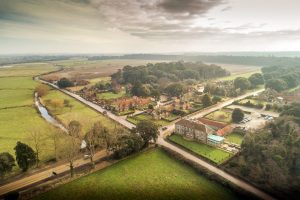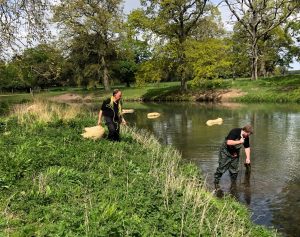Helping Our Wildlife
April 6, 2020 | WONDER | 4 minute read
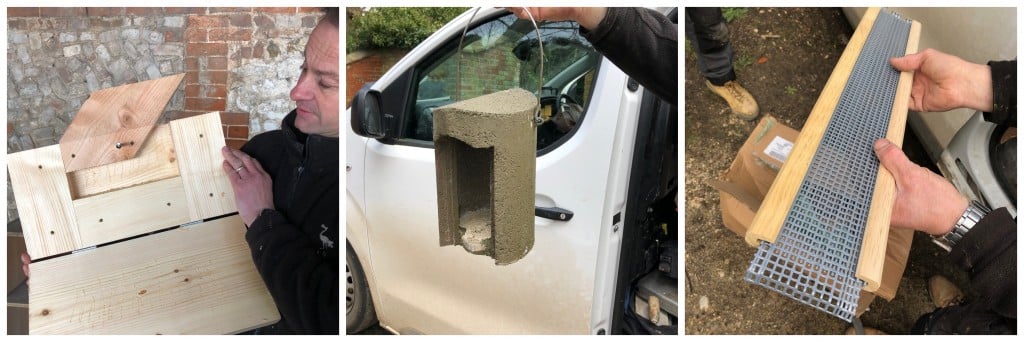
Left to right: Bat box, bird box, amphibian escape ladder.
A few weeks ago, we joined Phil and George as they installed some bat boxes, swallow boxes, bird boxes and amphibian escape ladders around our walled garden to help our local wildlife. Phil is our estate carpenter and George is his apprentice.
We’re undertaking a lot of building restoration work on the walled garden outbuildings at the moment, so we’re making new homes for wildlife too. It’s also an opportunity for us to better understand the creatures that call this place home. Amphibians can often become trapped in the basement of the Samuel Wyatt Vinery, and these amphibian escape traps are ramps to help toads and frogs escape back to the outdoors.
Working with our ecologist consultant and a group of dedicated volunteers, we will be checking the boxes regularly to see what’s living in them and keep count of what’s there.
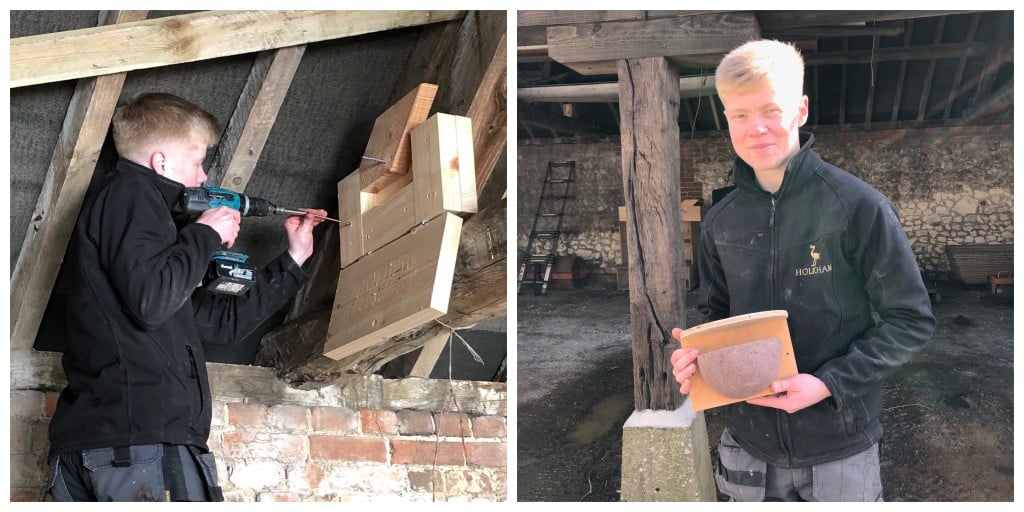
Our swallow and bird boxes have been made by our apprentice, George.
Every summer we hold bat walks, where we log what kinds of bats live at Holkham. Whilst on the walks, we do stumble across a few other creatures. Here we’ve complied some of our regular nocturnal residents…
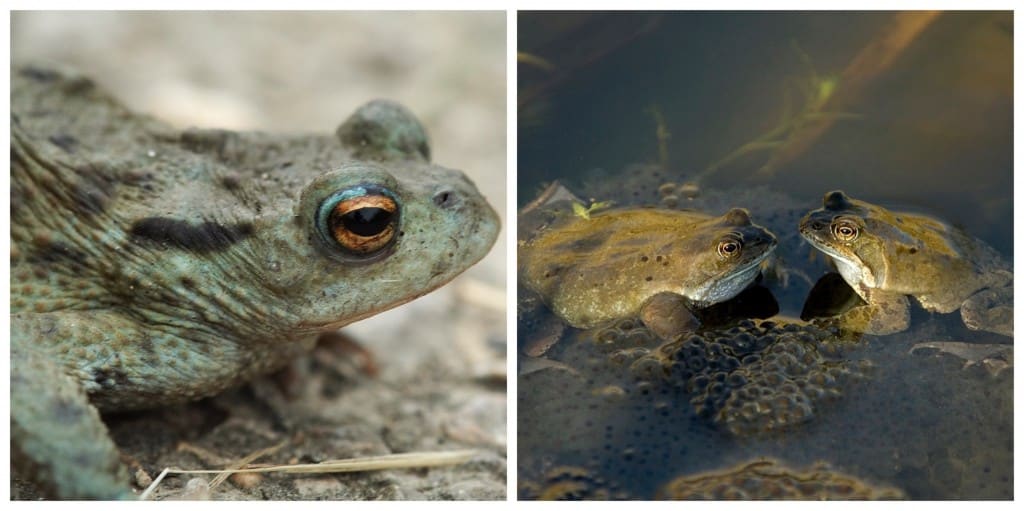
Left: Common toad Right: Common frog
COMMON TOAD bufo bufo
Common toads eat slugs and snails, making them a gardener’s friend throughout the year, apart from wintertime when they hibernate in the mud. They can live up to four years, and crawl rather than hop. These toads are not the most attractive creatures, with their warty skin, and they have special glands which produce a toxin to put off any predators.
COMMON FROG rana temporaria
Like the common toad, these frogs also eat slugs and snails, which is why they are often found in the darker, damper spots of the garden. They often live between five and ten years. They are much smaller and smoother than their toad counterpart.
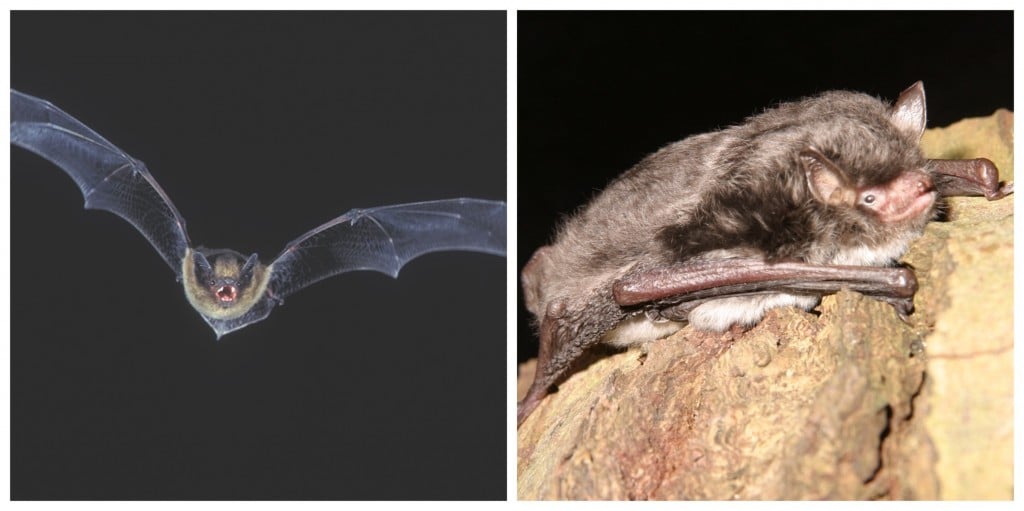
Left: Common Pipistrelle Right: Daubenton’s bat
COMMON PIPISTRELLE pipistrellus pipistrellus
Some of the tiniest bats around! These bats can fit into the smallest of places, in the likes of tree holes and the various nooks and crannies of buildings. It’s even been reported that they can fit into matchboxes! The common pipistrelle eats while flying and can eat up to 3,000 insects in one night. They are very fast, but fly quite erratically.
SOPRANO PIPISTRELLE pipistrellus pygmaeus
Very similar to the common pipistrelle in size and flight, the soprano pipistrelle is so-called because it has a different call with a different frequency.
DAUBENTON myotis daubentonii
The daubenton, or daubenton’s bat, likes wetlands. It hunts above water and can fly in a straight line. They hibernate in caves, tunnels and mines.
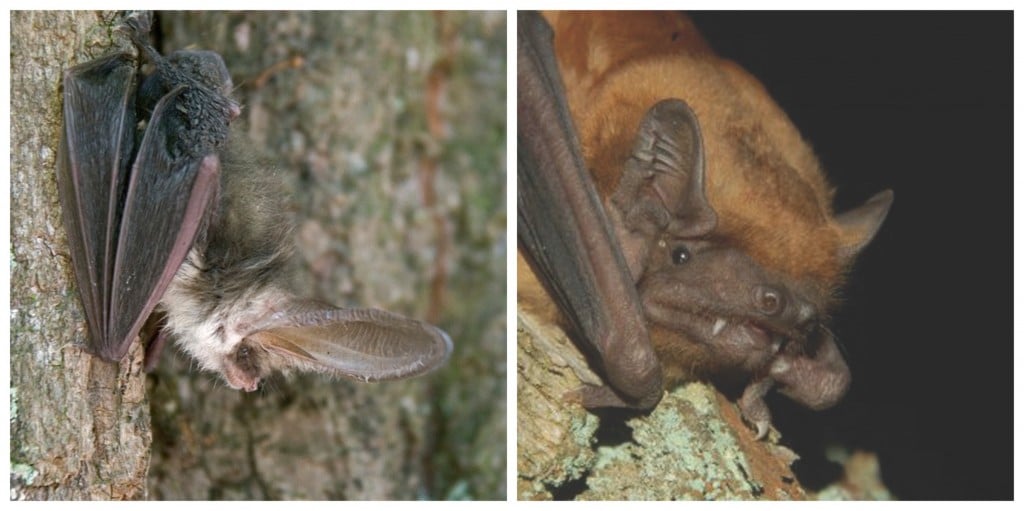
Left: Brown Long-Eared bat Right: Noctule Bat
BROWN LONG EARED BAT plecotus auritus
The brown long-eared bat is so-called because of its long ears, which are almost the same length as its body. Unlike most other bats, this species doesn’t like to eat while flying. It can also fly through foliage to catch insects, which it later eats upside down after its flight. It is also called a ‘whispering bat’, because it is so quiet.
NOCTULE BAT nyctalus noctula
This is the UK’s largest bat. It flies in a straight line, is very strong, and it is possible for humans to hear its call. They like beetles and prefer to sleep in nature rather than buildings.
We’d love to know what wildlife lives in your garden! Please let us know and tag us on Instagram or Facebook, so we can see all the wonderful creatures we share our gardens with.
View all latest blog posts here.
Back to Journal Back to Journal
